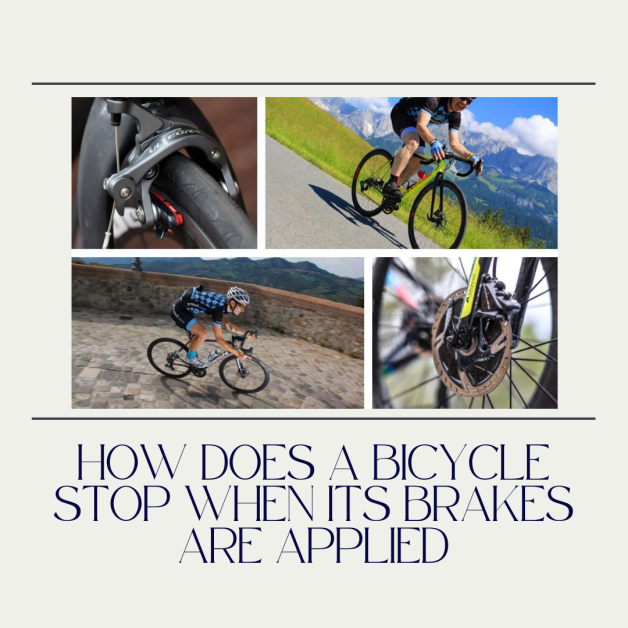Your Presence Shows that You’re looking that How Does a Bicycle Stop When Its Brakes are Applied?
Well!
We’ve worked on this topic. How does a bicycle stop when its brakes are applied? Well, it depends on what kind of bicycle you’re riding.
A motorcycle, for example, is much less likely to stop when its brakes are applied because the braking force is much greater than that of a bicycle.
So, how do you know whether or not your brakes will work on your bicycle?
The Brake System
A brake system is a mechanism that slows down or stops a moving object, such as a bicycle.
When you pull back on the handlebars, you are applying pressure to the brake pads, which in turn slow down the bicycle.
How a Bicycle Works?
The Bicycle is a combination of a frame and wheels. A wheel is composed of spokes which connect to the frame, and the frame is composed of a front fork and a back tire.
When you push down on the pedals, the force of your feet pushes the back tire against the ground, and the wheel rotates.
How the Brake System Works?
The brake system on a bicycle consists of a brake lever, a brake cable, and a brake caliper.
The brake lever is connected to the brake cable, which is attached to the brake caliper.
When the rider pulls on the brake lever, the brake cable is pulled, causing the brake caliper to squeeze the brake pads against the wheel. This stops the bicycle.
How the Brake System of bicycle Works in Practice?
A bicycle has a brake system that is a set of levers on each side of the handlebars.
You use the levers to apply pressure to the brake pads to stop the bike. The levers work in conjunction with the brake pads.
When you push down on the lever, the lever pushes down on the brake pad. When you pull back on the lever, the lever pulls back on the brake pad.
How to Apply the Brakes of bicycle?
The brake system on a bicycle consists of two brake levers, one on each handlebar, and two brake pads on the rear wheel.
When you want to stop, you push both brakes simultaneously and hold them until you stop.
If you only push one brake, you will not stop the bicycle.
Why Does the Brake Work?
When the brake is applied, the wheel slows down. This causes the back tire to compress slightly and pull the wheel forward.
This increases the angle of the wheel in relation to the ground, causing friction between the wheel and the road.
How Do You Know the Brake of bicycle Works?
If you were to ride a bicycle without a brake, you would see how fast you could go.
Once you get used to it, you would find yourself going faster and faster. This would be a good way to learn how to control your speed.
How Do You Know the Brake of bicycle Doesn’t Work?
If the brake does not work, you will know. When you ride the bike, you will feel the brake and then the bike will stop. If the brake does not work, you will not be able to stop.
Why does a bicycle not stop immediately when the brakes are applied?
A bicycle does not stop immediately because it has inertia. The faster you apply the brakes, the more inertia you will encounter.
The more inertia you encounter, the more force you will need to overcome to stop the bike.
Conclusion – How Does a Bicycle Stop When Its Brakes are Applied?
To stop your bike, you need to apply the brakes. To apply the brakes, you need to have the right amount of force applied to the front and back of the wheel.
The amount of force you apply depends on the speed of the bicycle, the size of the wheel, and the shape of the wheel.

